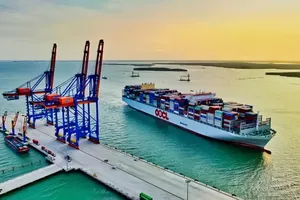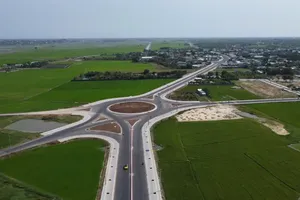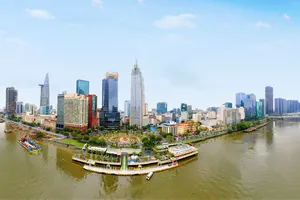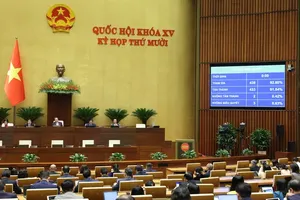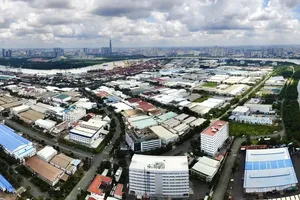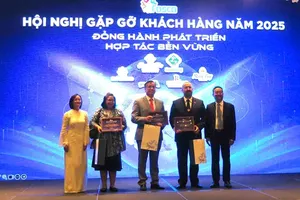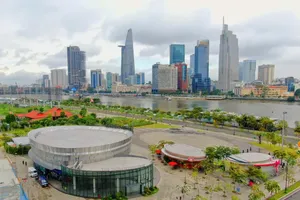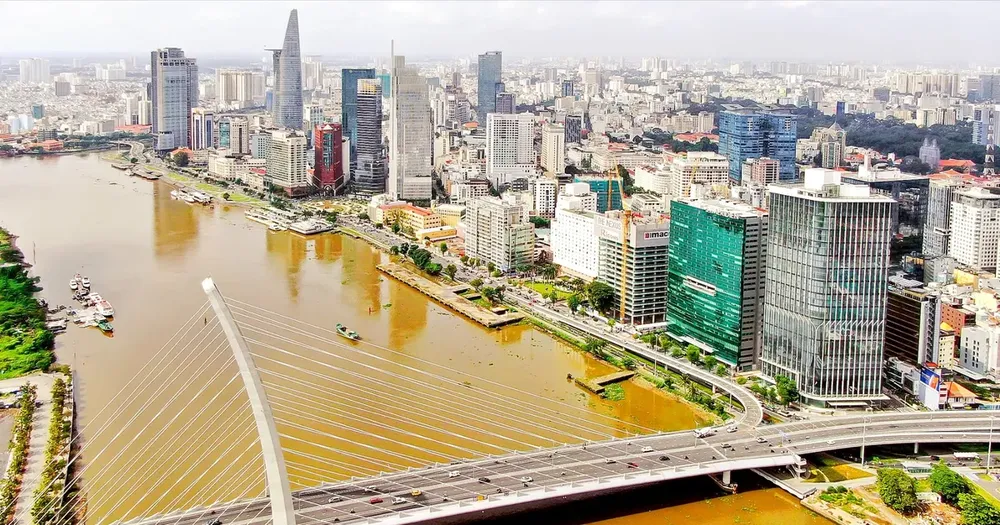
Chairman of the European Chamber of Commerce in Vietnam (EuroCham), Bruno Jaspaert, said that nearly three-quarters of European business leaders said they are willing to recommend Vietnam as an investment destination.
The nationwide administrative reorganization is more than a mere administrative reform; it also creates administrative units of sufficient scale and capacity to foster development and connectivity. This restructuring lays the groundwork for many localities to emerge as fertile ground for foreign direct investment (FDI).
Ho Chi Minh City stands as a compelling testament to this transformation. As of the end of May 2025, not including newly consolidated administrative units, the city leads the nation in attracting foreign direct investment (FDI), with over US$59.7 billion in registered capital. Because Binh Duong and Ba Ria–Vung Tau also rank among the top ten localities in attracting FDI, having drawn nearly US$42.9 billion and US$38.2 billion, respectively, Ho Chi Minh City is certainly still in the top position in the new rankings. The city now boasts a cumulative total of more than US$140 billion in FDI, accounting for 28 percent of Vietnam’s effective registered foreign investment.
Following a recent administrative reorganization, Ho Chi Minh City has emerged as a megacity with a population of around 14 million, covering nearly 6,800 square kilometers. The distance between the two farthest points in the area is approximately 200 km by road.
Already Vietnam’s leading center for finance, commerce, and innovation, with the addition of nearly 40 industrial parks from the former Binh Duong province, Ho Chi Minh City now has nearly 60 industrial parks, including traditional manufacturing hubs and those focused on the digital economy and innovation.
With the integration of the former Ba Ria–Vung Tau province, home to major oil and gas fields as well as critical infrastructure and technology for exploration, extraction, and processing, Ho Chi Minh City’s energy sector has been significantly reinforced with a series of oil and gas companies that have already established in the area, such as Vietnam-Russia joint venture Vietsovpetro, PetroVietnam Gas Joint Stock Corporation (PV GAS), Petrovietnam Exploration Production Corporation (PVEP), PetroVietnam Oil Corporation (PVOIL), PetroVietnam Technical Services Corporation (PTSC), PetroVietnam Drilling & Well Service Corporation (PV Drilling), Petrosetco Vung Tau General Services Joint Stock Company (PSV), PetroVietnam Transportation Corporation (PV Trans), among others.
In terms of transportation, Ho Chi Minh City is emerging as a major international logistics hub, bolstered by a highly integrated network of air and sea ports with Tan Son Nhat International Airport featuring T1, T2, and T3 terminals; Long Thanh International Airport located in neighboring Dong Nai Province but only about 40 kilometers from downtown Ho Chi Minh City; Vietnam's largest port, Cat Lai; Cai Mep–Thi Vai, the country’s deepest deep-water port; Can Gio and Tan Cang covering Phu Huu and Hiep Phuoc areas; and Tan Thuan International Container Terminal. With this infrastructure, Ho Chi Minh City is positioned to compete on par with the leading logistics centers in the region.
In addition, the city also has added strengths in sea and island tourism, including the popular beaches of Vung Tau, Ho Tram, Long Hai, Binh Chau, Can Gio, and the pristine Con Dao archipelago.
To turn the above huge potentials into overall growth and increase effective foreign direct investment (FDI) attraction, Ho Chi Minh City has taken significant steps. In an effort to accelerate the attraction of large investors to participate in the high-value fields of science and technology and innovation, the city is currently finalizing regulations related to a list of priority industries for strategic investment.
The city has pledged to significantly reduce the processing time for handling investment documents, such as the time required to issue new investment registration certificates and approve applications for capital contributions, share acquisitions, and equity purchases in economic organizations, which has been cut from 15 working days to just 7. The issuance of investment registration certificates has been shortened from 3 working days to only 1.
Ho Chi Minh City is also prioritizing the adoption of digital technologies in investment management. At the same time, it has proposed reforms to the national foreign investment information system, aiming to implement administrative procedures related to foreign investment projects.
If the restructuring of administrative units runs smoothly, it can be believed that Ho Chi Minh City will reap a harvest from its FDI “garden” despite ongoing challenges in the global landscape.

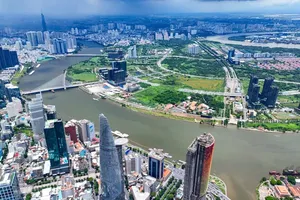

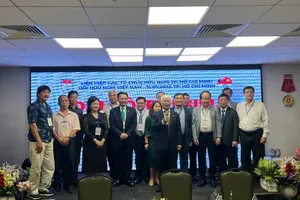
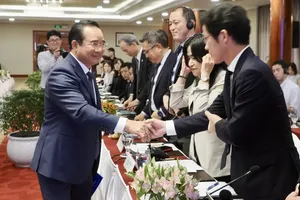
)
